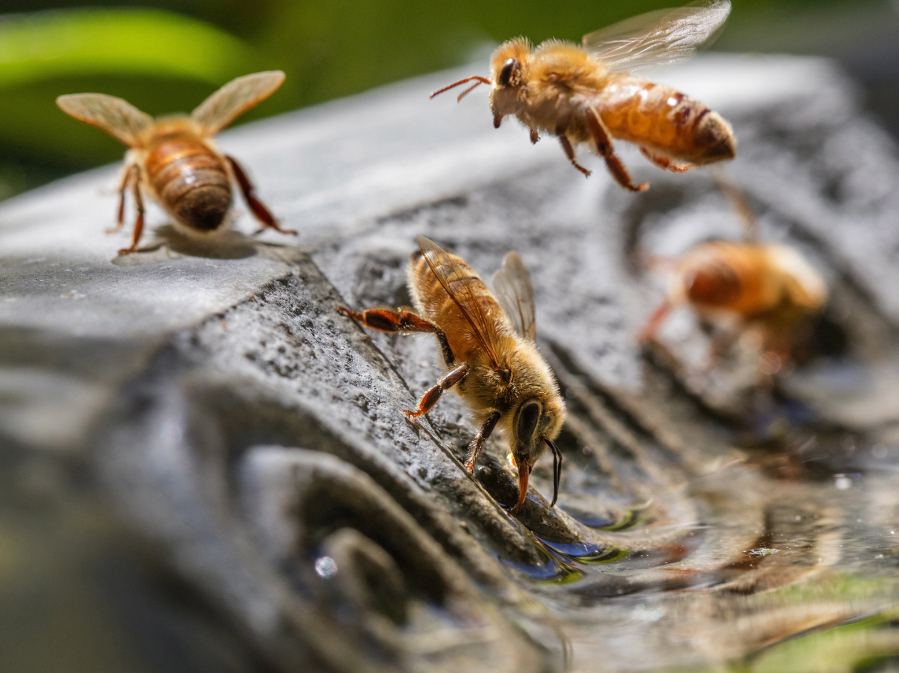You think you’re hot. Try living in a space no bigger than, well, a beehive with 20,000 of your closest friends. Or, wearing a down coat as summer temperatures start to cook.
People have their strategies for cooling down as the mercury rises. So do animals.
On a really hot day, you’ll see crows and other birds holding their mouths open. They are practicing what scientists call gular fluttering — panting.
“Since they don’t have sweat glands, the best way for them to achieve evaporative cooling is to pant like a dog,” notes John Marzluff, a professor of wildlife sciences at the University of Washington.
Seattle nature photographer Gerrit Vyn also notes birds flatten their feathers in the heat, to reduce their insulating capacity — the opposite of fluffing up in the cold.
Bees have multiple strategies to beat the heat.
For bumblebees, flight is the ticket. The convective cooling of their self-made breeze helps them cope.
But honeybees, cooped up by the thousands in their hive, have to take multiple steps to survive — and protect next year’s brood, maturing in cells deep in the hive.
For starters, like people, they’ll head outside. As much as a third to half the residents of the hive will evacuate on a hot day, diminishing the heat all their bodies are generating.
If that isn’t enough, they will practice what Tom Seeley, professor of biology in the department of Neurobiology and Behavior at Cornell University, calls “social ventilation.” The bees will stand at the entrance to the hive, line up, and beat their wings in synchrony to generate air velocities of more than 6 feet per second. “It’s quite a breeze, you can put your hand in front of a hive and actually feel a draft,” Seeley said.
But on really hot days where all that does is pull in more hot air, it’s time to turn to the specialized skill of the water-collection bees. Elders in the hive, they are the only ones trusted with this crucial task.
But how do they know when it’s time to head out to get water to cool down the hive? Seeley and his team reported in their paper published in The Journal of Experimental Biology in March, they take their cue from other bees begging them for water. All it takes is an antenna tap and tongue touch from a begging bee, and they are out of the hive, on their lifesaving mission.
With their proboscis, they will lap and suck up water, which they store in their honey sac, taking only about 60 seconds to tank up. Each bee can carry only about 50 micrograms of water in a flight — 80 percent of her own body weight, and doubling the size of her abdomen — yet only about a quarter of one drop of water. A water-collecting bee will make flight after flight after flight for the good of the hive.



